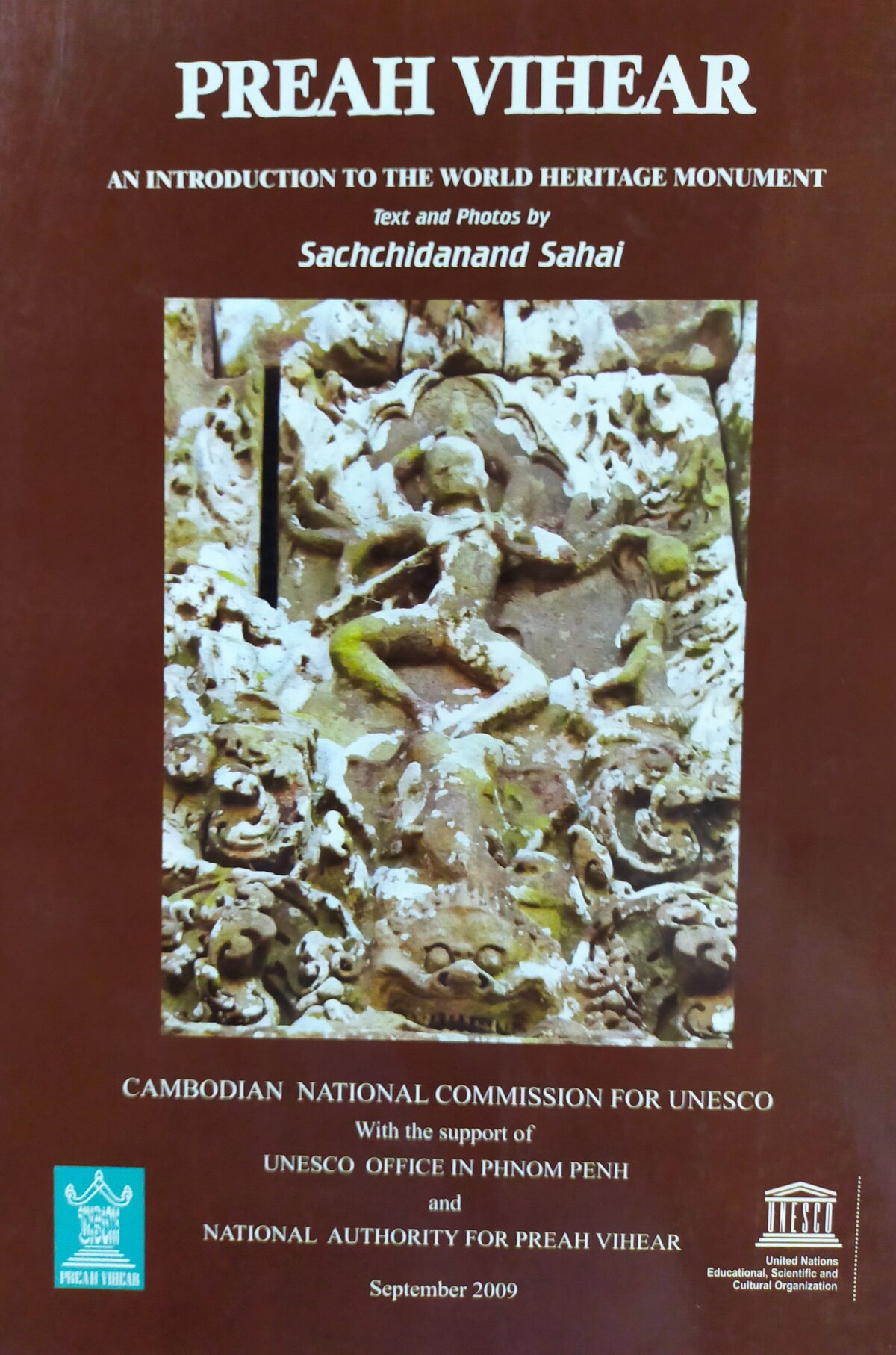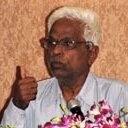Preah Vihear: An Introduction to the World Heritage Monument
by Sachchidanand Sahai
An erudite and intimate study on Preah Vihear and its cliff, "an open air theater for the cosmic dance of Shiva".

- Format
- paperback
- Publisher
- Cambodian National Commission for Unesco, with the support of UNESCO Phnom Penh and the National Authority For Preah Vihear
- Edition
- Courtesy of UNESCO Phnom Penh
- Published
- September 2009
- Author
- Sachchidanand Sahai
- Pages
- 215
- ISBN
- 9789996303005
- Language
- English
Whether it comes from their natural background, their historic significance or their obvious status of spiritual landmark, there are few places more inspiring than Preah Vihear, the temple-monastery long disputed between Thailand and Cambodia, nowadays recognized as an intrinsic part of the ancient Khmer culture and as a UNESCO World Heritage monument.
The author, a distinguised Sanskritist and Asian art historian, revisits the works by French explorers and archaelogists such as Etienne Aymonier and Henri Parmentier, corrects them when needed, and expands the archaelogical approach to Preah Vihear in order to develop a very well-documented, and profundly intimate vision of the vihear as an open air theatre, background for the cosmogonic performance of Shiva “the wandering, non-conforming and pre-historic Yogi”.
His vast knowledge of Indian culture, and of the Khmer apportation to the Shivaist traditions, illuminates the role of the “temple in the clouds” within the development of the Angkorean dynasties, and the symbolic, religious high status it has always retained in spite of its apparent “remoteness”.
We found particularly fascinating his considerations on one aspect that has always puzzled Western researchers: the intimate relation between ascetism and performing arts. According to him, the mountaintop situation does not only induce to insulation, self-removing from the world: it is an exalted place where cosmic forces can converge.
Notes the author: “It is obvious that Shiva dances at the peak of Preah Vihear to destroy the evil forces threatening the Angkor Empire (…) Shiva says of himself: “I am the originator, the god abiding in supreme bliss. I, the yogi, dance eternally”.” Shiva Nataraja, or Natakhesvara (kamrateng an ta ram in Khmer) usually translated by the King of Dancers, literally means the Lord of Theatre: “Both at Angkor and Preah Vihear, the north Indian version of the ten-armed Shiva was popular.” But above all, he remarks, “the Khmers were consummate dancers in the Mekong Valley long before the arrival of Indians in the region. Dance is their intrinsic skill, their second nature.”
Correcting Aymonier’s earlier map, the author remarks the southernmost source of water is not a rectangular man-made basin but a natural cavity collecting water.
All architectural elements are directed toward the centrality of the dancing Shiva, asserts the author.
Tags: Preah Vihear, Suryavarman II, Shiva, ascetism, dance, Shivaism or Saivism
About the Author

Sachchidanand Sahai
Sachchidanand Sahai (6 March 1941, Bihar, India) is an Indian epigraphist, scholar and writer who wrote several essays on Angkorean civilization, and served as scientific advisor to the Government of Cambodia for the restoration of Angkor Wat and the Temple of Preah Vihear. His study on the latter temple (2009) helped to secure its inscription on UNESCO World Heritage List.
After studying Indian history, culture and archaeology at Banares Hindu University, Varanasi, he presented his doctoral thesis under the guidance of George Coedès at Sorbonne University in 1969 (Les Institutions politiques et l’organisation administrative du Cambodge ancien). He then taught in Laos (1970−1972), the Indira Gandhi National Centre for the Arts (1988 to 1990), the Epigraphy Department of the Indian Institute of Archaeology, the Department of Ancient Indian and Asian Studies, Magadh University (vice-chancelor 1992 – 2010).
A scientific advisor to the Government of Cambodia, Dr. Sahai published several books on Angkor Thom, Ta Prohm, Bayon, Preah Vihear. He is also the author of a five-volume work on the Lao Ramayana (Gvay Dorhabi), the Hindu temples of Southeast Asia, The Mekong River: Space and Social Theory, Pablo Neruda and India, India seen by the Siamese. Since 1976, he is the founder-editor of the South East Asian Review, founded with his late wife, Dr. Sudha Verma.
Publications
- The Cosmic and Supernatural in Southeast Asian Civilization, Bangkok, Thammasat University, 1969.
- Les institutions politiques et l’organisation administrative du Cambodge ancien (VIe-XIIIe siècles), Paris, PEFEO 75, 1970.
- Ramayana in Laos: a study in the Gvay dvorahbi, Totnes (UK), BR Publishing Corporation, 1976.
- The Kr̥ṣṇa Saga in Laos: A Study in the Br̲aḥ Ku’td Br̲aḥ Bān, Totnes (UK), BR Publishing Corporation, 1978.
- [with Barend Jan Terwiel] The Tai of Assam and ancient Tai ritual, Centre for South East Asian studies, 1980.
- The Rama Jakata in Laos: A Study in the Phra Lak Phra Lam, Totnes (UK),BR Publishing Corporation, 1996, ISBN 978 – 8170188391.
- India in 1872 as Seen by the Siamese, Totnes (UK), BR Publishing Corporation, 2003. ISBN 978 – 8176462334.
- The Mekong River: Space and Social Theory, Totnes (UK), BR Publishing Corporation, 2005. ISBN 978 – 8176464741.
- The Bayon of Angkor Thom, Chiang Mai, White Lotus Press, 2007. ISBN 978 – 9744800985.
- [with Pradeep Kumar Kapur] Ta Prohm : A Glorious Era in Angkor civilization, Chiang Mai, White Lotus Press, 2007.
- Preah Vihear — An Introduction to the World Heritage Monument, 2009.
- The Hindu Temples in South East Asia: Their Role in Social Economic and Political Formations, Delhi, Shimla Indian Institute of Advanced Study, Aryan Books, 2012. ISBN 978 – 8173054280.
- [with Heng Piphal], “The Temple Economy of Angkor”, in The Angkorian World, 2023.



